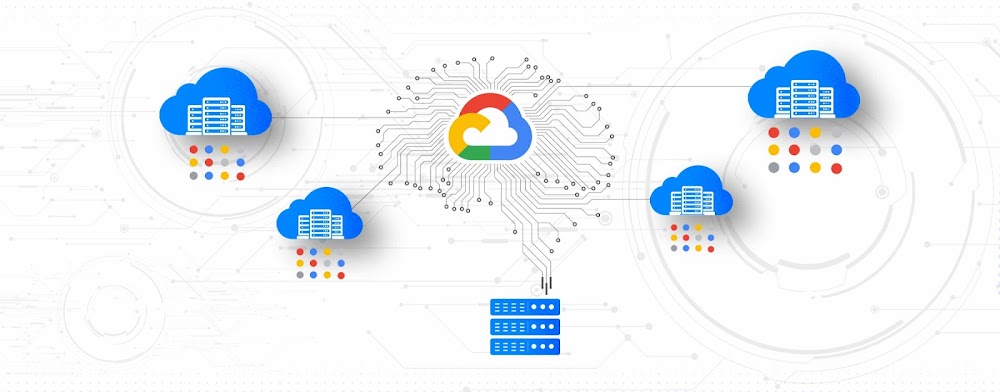
What is multicloud?
Multicloud refers to using services from more than one public cloud provider at the same time. A multicloud environment allows your cloud environments to be private, public, or a combination of both.
The primary goal of a multicloud strategy is to give you flexibility to operate with the best computing environment for each workload.
Multicloud solution patterns
For organizations seeking to optimize cloud infrastructure capabilities and spending, a multicloud solution may be the best approach. It gives organizations access across cloud providers so workloads and data can be placed in an environment best suited to their capabilities. The following solution patterns show how multicloud computing can be used most effectively.
- Single-stack architecture: A single-stack architecture refers to an approach where an organization relies exclusively on one cloud service provider’s ecosystem or stack for its infrastructure, platform, and software needs. This contrasts with multicloud architectures, where multiple cloud providers are used for various services and workloads. Here are some characteristics and considerations of a single-stack architecture
- Application and database split-stack architecture: In a multicloud application split-stack architecture, the application front end and database back end are deployed on different clouds with a low-latency and high-bandwidth network connecting the stacks.
- Analytics and database split-stack architecture: In a multicloud analytics split-stack architecture, the data analytics and database are deployed on different clouds with a low-latency and high-bandwidth network connecting the stacks
- SaaS or ERP data analytics and integration architecture: SaaS or ERP application and the data analytics or custom application are deployed on different clouds with a
low-latency and high-bandwidth network connection.
An Oracle E-Business Suite, SAP, or Microsoft Dynamics integration with custom applications or a cloud data lakehouse is a good example. A dedicated private network connection between the cloud providers is recommended unless a network cross-connect exists between the cloud providers. - Horizontal workload distribution: Use cases include on-demand workloads, such as high performance computing (HPC) for animation rendering, artificial intelligence, machine learning, analytics jobs, and video games. PostgreSQL, MongoDB, and MySQL are commonly used if the database is required. The workloads are dynamically distributed horizontally to the Kubernetes clusters or VMs on different clouds based on performance, availability, and cost. A dedicated private network connection or virtual provide network (VPN) between the cloud providers is recommended.
- Product and development split deployment: The production and development are deployed in different clouds with a VPN to connect the environments. The organization keeps the current development and testing environment in one cloud while running production in multiple clouds for performance, data residency/proximity, and cost reasons. The workload can be applications. A VPN between the cloud providers is recommended.
- Cost optimization : Multicloud environments can be a good option for minimizing your IT spending. Public cloud comes with less overhead while allowing you to scale up or down according to your needs. You can lower TCO while also taking advantage of the best combination of pricing and performance across different providers.
- Best of each cloud: Multicloud allows you to choose from many cloud vendors and provides the flexibility to match specific features and capabilities to optimize your workloads in the cloud based on factors like speed, performance, reliability, geographical location, and security and compliance requirements.
- Increased reliability and redundancy: Multicloud reduces unplanned downtime or outages since it reduces the risk of a single point of failure. An outage in one cloud won’t necessarily impact services in other clouds, and if your cloud does go down, your computing needs can be routed to another cloud that’s ready to go.
- Advanced security and regulatory compliance: A multicloud strategy enables you to deploy and scale workloads while also implementing security policies and compliance technologies consistently across all of your workloads, regardless of service, vendor, or environment.
- Avoid vendor lock-in: A multicloud environment allows you to build anywhere, fast. With a multicloud approach, you’re not tied to a single provider. You can choose whatever solution best suits your business needs while reducing data, interoperability, and cost issues that often arise when you become too dependent on one cloud.
- Innovative technology: Cloud providers constantly invest in developing new products and services. Multicloud enables you to leverage new technologies as they emerge to improve your own offerings without being limited to the choice offered by a single cloud provider.
- Having more flexibility and avoiding vendor lock-in
- Ensuring high availability to prevent website outages
- Developing a strong data protection and risk mitigation plan
- Providing the best latency and load times for your customers
- Acquiring competitive pricing between cloud providers
- Having constant access to network performance improvements
- Following region-specific compliance rules
- For all its benefits, a multicloud approach does come with potential roadblocks that some organizations find difficult to navigate. Some of the most common multicloud challenges include increased management complexity, maintaining consistent security, integrating software environments, and difficulty with achieving consistent performance and reliability across clouds.
- A multicloud strategy should take into consideration business requirements, design and development drivers, and any architecture constraints that may arise from existing systems. It’s vital to take the time to clearly define your goals in a vision statement that outlines the reasons you want to migrate your current computing environment, the primary metrics you want to optimize for with the public cloud, and the long-term plan for using a multicloud setup in your organization. From there, you can work to create a plan on how to approach and implement a multicloud setup, from assessing and prioritizing your workloads, identifying the right cloud computing environment for them, and the architecture pattern, technologies, and network topologies that will work best for your requirements.
- Veritas : A leader in multicloud data management, delivers resilience against cyberattacks by helping to ensure data protection, recoverability, and compliance for more than 80,000 customers.
- Murad : Murad, a globally recognized skincare brand, distinguishes itself with science-based treatments and products.
Multicloud benefits.
Multicloud design considerations
When designing a multicloud solution, it’s essential to consider network latency, data movements, security, orchestration, and operation management, which ultimately drive the architectural decisions.
Why use a multicloud strategy?
If your organization cares about any of the following, you’re probably a good candidate for a multicloud strategy:
These activities require more options and capabilities than a one-cloud strategy can provide, especially given the differing priorities, business requirements, and digital maturity across organizations.
Challenges of multicloud
Multicloud customer successes
Post a comment Cancel reply
Related Posts
Passkeys: The Future of Passwordless Authentication
The days of memorizing complex passwords may soon be behind us. With the growing need…
The Role of APIs in Accelerating Innovation
In today’s rapidly evolving digital world, businesses must innovate quickly to stay ahead. One of…
Generative AI in Oracle Databases
Oracle has integrated generative AI capabilities into its database ecosystem, particularly with Oracle Database 23ai…
The Pivotal Role of UI/UX in Software Development and the AI Advantage
In today's fast-paced digital world, software development has transcended mere functionality. A well-designed software application…


















